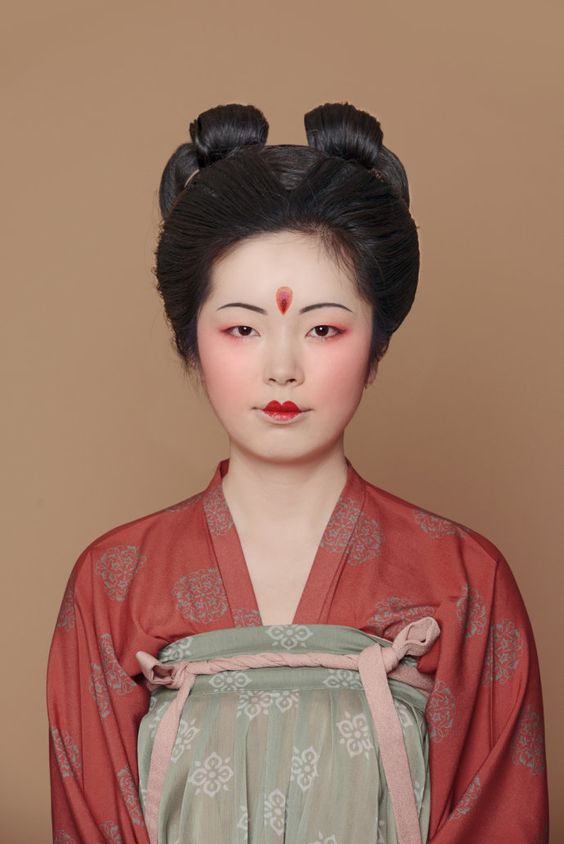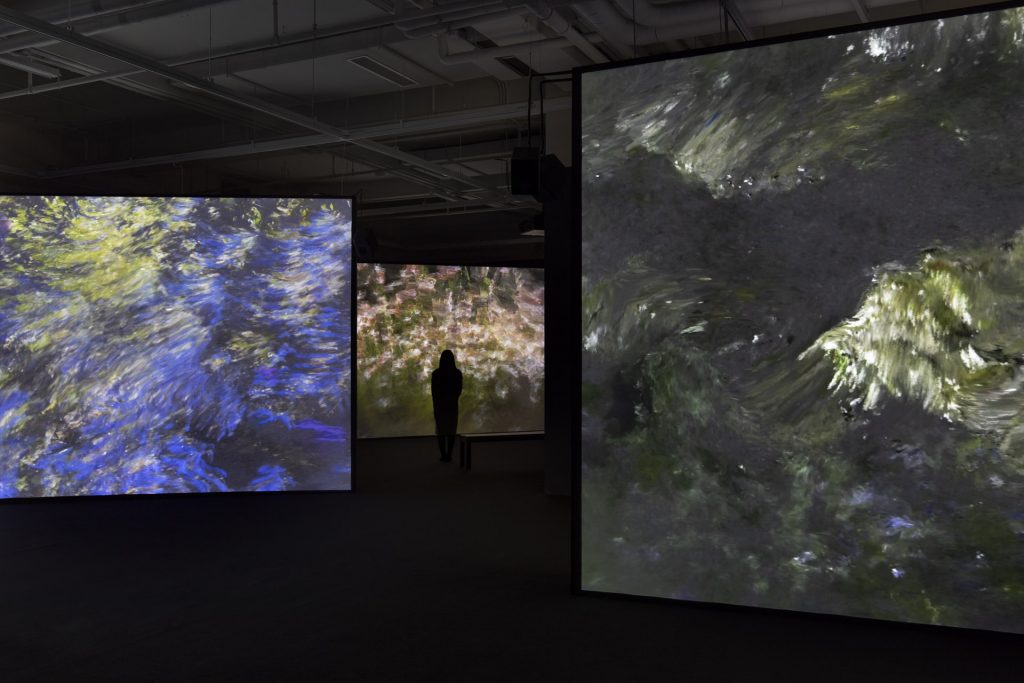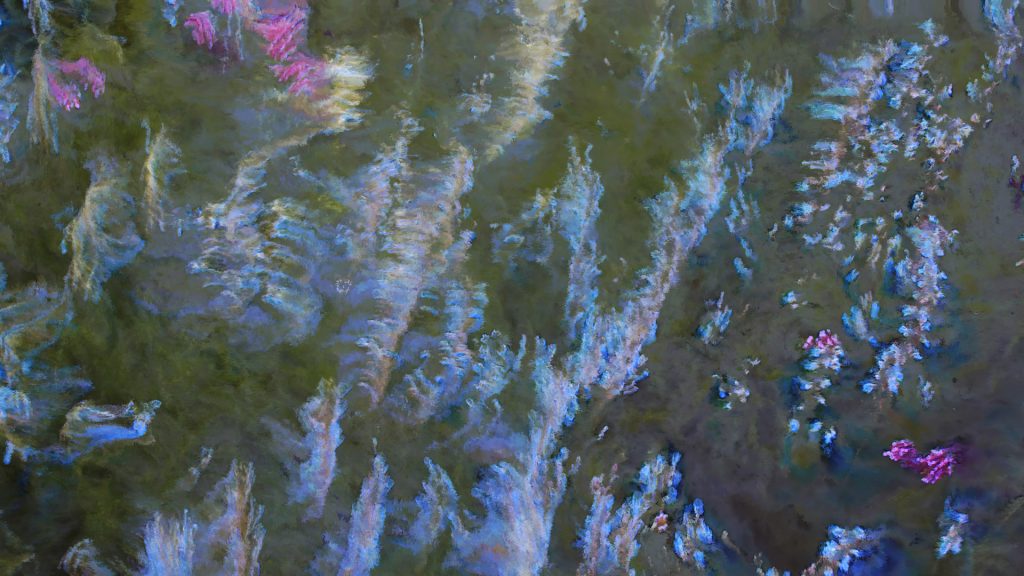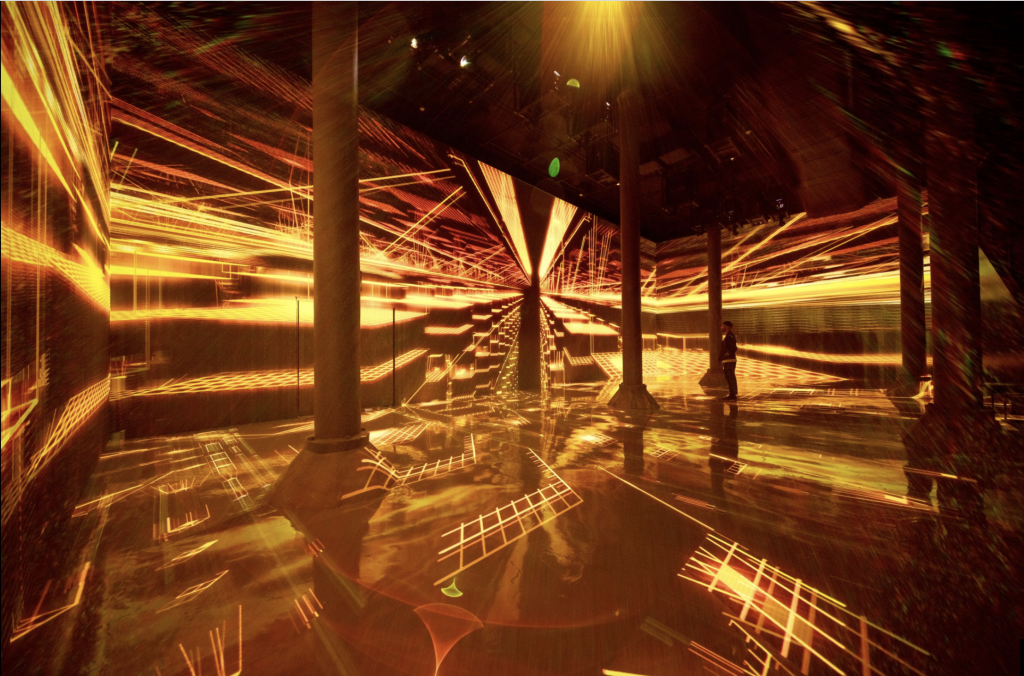You might need to refresh the page to see the changes because the mousePressed function does not really work in my code. I will update this post when I figure out why.
//Jiaqi Wang section C
var eyeH= 15;
var eyeL= 55;
var faceW= 90;
var eyeD=20;
var eyeP=330;
var num;
var num2;
var blush=100;
function setup() {
createCanvas(480, 640);
background(179,187,146);
}
function draw() {
//neck
fill(244,233,222);
noStroke();
quad(179, 450, 91, 531, 315, 550, 252, 403);
fill(128,17,41);
arc(200,637,400,250,PI,0);
//face
var mid=182;
noStroke();
fill(244,233,222);
beginShape();
//chin point
curveVertex(mid, 461);
curveVertex(mid, 461);
curveVertex(mid-(faceW*0.5), 440);
//jaw left
curveVertex(mid-(faceW*0.8), 403);
//temple left
curveVertex(mid-faceW, 330);
//brow bridge
curveVertex(mid-(faceW*1.03), 276);
//hairline left
curveVertex(mid-(faceW*0.74), 217);
//hairline mid
curveVertex(mid, 217);
//hairline right
curveVertex(mid+(faceW*0.74), 217);
//brow bridge right
curveVertex(mid+(faceW*1.03), 276);
//temple right
curveVertex(mid+faceW, 330);
//right jaw
curveVertex(mid+(faceW*0.8), 403);
curveVertex(mid+(faceW*0.5), 440);
curveVertex(mid, 461);
curveVertex(mid, 461);
endShape();
//blush
fill(235,104,119);
ellipse(mid-faceW,328,blush,blush);
fill(235,104,119);
ellipse(mid+faceW,328,blush,blush);
//eye
//left
//eyeball
num=random(0.3,0.8);
num2=random(0,0.3);
fill(255);
beginShape();
//inner eye corner left
curveVertex(mid-eyeD, eyeP);
curveVertex(mid-eyeD, eyeP);
//middle of eye
curveVertex(mid-eyeD-(eyeL*num), eyeP-eyeH);
//end of eye
curveVertex(mid-eyeD-eyeL,eyeP-(eyeH*0.93));
//bottom of eye
curveVertex(mid-eyeD-(eyeL*num), eyeP);
curveVertex(mid-eyeD, eyeP);
curveVertex(mid-eyeD, eyeP);
endShape();
//pupil
fill(86,70,31);
ellipse(mid-eyeD-(eyeL*0.4),eyeP-(eyeH*0.4),eyeH*0.9,eyeH*0.9);
noFill();
fill(0);
ellipse(mid-eyeD-(eyeL*0.4),eyeP-(eyeH*0.4),eyeH*0.3,eyeH*0.3);
noFill();
fill(255);
ellipse(mid-eyeD-(eyeL*0.45),eyeP-(eyeH*0.45),eyeH*0.2,eyeH*0.2);
noFill();
//eyeline
fill(0);
beginShape();
//inner eye corner left
curveVertex(mid-eyeD, eyeP);
curveVertex(mid-eyeD, eyeP);
//middle of eye
curveVertex(mid-eyeD-(eyeL*num), eyeP-eyeH);
//end of eye
curveVertex(mid-eyeD-eyeL,eyeP-(eyeH*0.93));
//bottom of eye
curveVertex(mid-eyeD-(eyeL*num), eyeP);
curveVertex(mid-eyeD-eyeL-(num*10),eyeP-(eyeH*0.93));
curveVertex(mid-eyeD-(eyeL*num), eyeP-eyeH-(num*9));
curveVertex(mid-eyeD, eyeP);
curveVertex(mid-eyeD, eyeP);
endShape();
//eyebrow
fill(0);
var x= max(num2,0.43);
ellipse(mid-eyeD-(eyeL*0.5),eyeP-(x*100),num*90,num2*50);
//hair
beginShape();
//jaw left
curveVertex(mid-(faceW*0.8), 403);
curveVertex(mid-(faceW*0.8), 403);
//temple left
curveVertex(mid-faceW, 330);
//brow bridge
curveVertex(mid-(faceW*1.03), 276);
//hairline left
curveVertex(mid-(faceW*0.74), 217);
//hairline mid
curveVertex(mid, 217);
//head top
curveVertex(mid, 145);
//head top left
curveVertex(mid-(faceW*0.5), 163);
//turn
curveVertex(mid-(faceW*0.8),193);
//concave
curveVertex(mid-(faceW*1.8),300);
//bottom left
curveVertex(mid-(faceW*1.3),395);
//bottom right
curveVertex(mid-(faceW*0.9),395);
curveVertex(mid-(faceW*0.8), 403);
curveVertex(mid-(faceW*0.8), 403);
endShape();
beginShape();
//jaw left
curveVertex(mid+(faceW*0.8), 403);
curveVertex(mid+(faceW*0.8), 403);
//temple left
curveVertex(mid+faceW, 330);
//brow bridge
curveVertex(mid+(faceW*1.03), 276);
//hairline left
curveVertex(mid+(faceW*0.74), 217);
//hairline mid
curveVertex(mid, 217);
//head top
curveVertex(mid, 145);
//head top left
curveVertex(mid+(faceW*0.5), 163);
//turn
curveVertex(mid+(faceW*0.8),193);
//concave
curveVertex(mid+(faceW*1.8),300);
//bottom left
curveVertex(mid+(faceW*1.3),395);
//bottom right
curveVertex(mid+(faceW*0.9),395);
curveVertex(mid+(faceW*0.8), 403);
curveVertex(mid+(faceW*0.8), 403);
endShape();
ellipse(153-(num*20),155,190-(num*40),150-(num*90));
ellipse(245+(num2*20),177,80,50);
ellipse(245+(num2*20),130,80+(num*40),80+(num*40));
//right
//eyeball
fill(255);
beginShape();
//inner eye corner left
curveVertex(mid+eyeD, eyeP);
curveVertex(mid+eyeD, eyeP);
//middle of eye
curveVertex(mid+eyeD+(eyeL*num), eyeP-eyeH);
//end of eye
curveVertex(mid+eyeD+eyeL,eyeP-(eyeH*0.93));
//bottom of eye
curveVertex(mid+eyeD+(eyeL*num), eyeP);
curveVertex(mid+eyeD, eyeP);
curveVertex(mid+eyeD, eyeP);
endShape();
noLoop()
//pupil
fill(86,70,31);
ellipse(mid+eyeD+(eyeL*0.7),eyeP-(eyeH*0.7),eyeH*0.9,eyeH*0.9);
noFill();
fill(0);
ellipse(mid+eyeD+(eyeL*0.7),eyeP-(eyeH*0.7),eyeH*0.3,eyeH*0.3);
noFill();
fill(255);
ellipse(mid+eyeD+(eyeL*0.65),eyeP-(eyeH*0.55),eyeH*0.2,eyeH*0.2);
noFill();
//eyeline
fill(0);
beginShape();
//inner eye corner left
curveVertex(mid+eyeD, eyeP);
curveVertex(mid+eyeD, eyeP);
//middle of eye
curveVertex(mid+eyeD+(eyeL*num), eyeP-eyeH);
//end of eye
curveVertex(mid+eyeD+eyeL,eyeP-(eyeH*0.93));
//bottom of eye
curveVertex(mid+eyeD+(eyeL*num), eyeP);
curveVertex(mid+eyeD+eyeL+(num*10),eyeP-(eyeH*0.93));
curveVertex(mid+eyeD+(eyeL*num), eyeP-eyeH-(num*9));
curveVertex(mid+eyeD, eyeP);
curveVertex(mid+eyeD, eyeP);
endShape();
//eyebrow
fill(0);
var x= max(num2,0.43);
ellipse(mid+eyeD+(eyeL*0.5),eyeP-(x*100),num*90,num2*50);
//mouse
fill(235,104,119);
ellipse(mid,416,30,20);
stroke(0);
noFill();
beginShape();
curveVertex(mid-20, 414);
curveVertex(mid-20, 414);
curveVertex(mid-6,412);
curveVertex(mid,416);
curveVertex(mid+6,412);
curveVertex(mid+20, 414);
curveVertex(mid+20, 414);
endShape();
//decoration
var x=random(112,170);
var y=random(100,190);
fill(255,225,90);
noStroke();
push();
translate(x+(num*100), y+(num2*100));
rotate(frameCount / 200.0);
polygon(0, 0, 50,13);
pop();
fill(255,124,24);
stroke(255);
push();
translate(x, y);
rotate(frameCount / -100.0);
polygon(0, 0, 20, 9);
pop();
//nouse
fill(0);
noStroke();
ellipse(mid-5,394,2,3);
ellipse(mid+5,394,2,3);
//right jaw
stroke(255);
noFill();
beginShape();
curveVertex(mid+(faceW*0.8), 403);
curveVertex(mid+(faceW*0.8), 403);
curveVertex(mid+(faceW*0.5), 440);
curveVertex(mid, 461);
curveVertex(mid, 461);
endShape();
}
function mousePressed() {
faceW = random(280, 330);
eyeD = random(210, 300);
eyeP = random(50, 60);
}
//I do not know why this function is not working
function polygon(x, y, radius, npoints) {
let angle = TWO_PI / npoints;
beginShape();
for (let a = 0; a < TWO_PI; a += angle) {
let sx = x + cos(a) * radius;
let sy = y + sin(a) * radius;
vertex(sx, sy);
}
endShape(CLOSE);
}

I was inspired by ancient Chinese woman makeups from different periods of time.
![[OLD FALL 2020] 15-104 • Introduction to Computing for Creative Practice](../../../../wp-content/uploads/2021/09/stop-banner.png)









